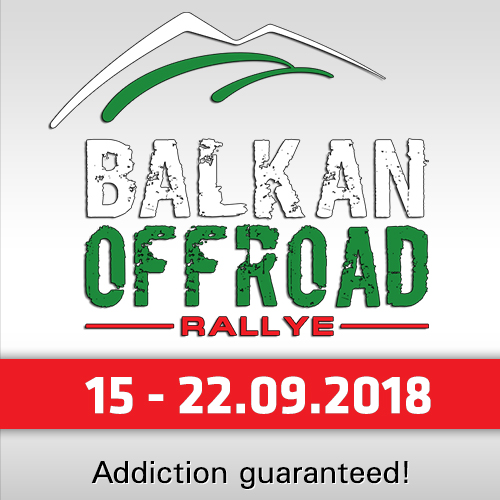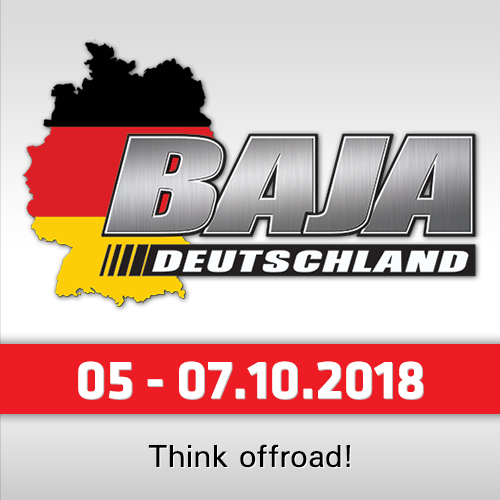Linked in categories: 2018 | Dakar 2018 | Rallyraid
Dakar Rally 2018: X-raid with 4x4 and two-wheel-drive Mini John Cooper Works
 Editor: Hansy Schekahn
Editor: Hansy Schekahn
 Photos: See credits under article
Photos: See credits under article
 In database since December 06, 2017
In database since December 06, 2017
In the 2018 Dakar, the German team X-raid makes a significant move into a new era by presenting the Mini John Cooper Works Buggy. During the last 15 years, the Trebur based team fully focused on four-wheel drive vehicles, but in the 2018 Dakar which starts in early January at Lima, Peru, the team will enter with a premiere: A X-raid designed two-wheel drive desert racer.
"We are absolutely delighted with having the opportunity to present our buggy. During the last months our entire team worked really hard on this vehicle," said X-raid Team Principal Sven Quandt. "This development is unique in the X-raid history. Never before have been so many engineers involved in the development of a X-raid car." Although investing a lot of time in the development of the buggy, the Mini John Cooper Works Rally was also improved in many areas and drastically redesigned whilst keeping its proven reliability.
"Due to the regulation advantages, we came up with the idea of building a buggy for quite a while," Quandt revealed. In late 2016 the idea began to take shape. The work on the project started then in February 2017. All in all, more than 45 engineers of X-raid and numerous partners worked together on the new buggy. "The aero package was of major importance and was enhanced together with KLK Motorsport in many simulations and the final looks of the vehicle were created in cooperation with Mini design," said Quandt.
BMW Steyr designed – within the framework of the regulations – a completely new engine, based on the well-known BMW six-cylinder power unit. And it goes without saying that long-term partners, such as BMW Motorsport, Magna, Heggemann, CP Autosport and Faster, also took their part in the development. "It was the very first buggy designed and built by us but we were able to profit from our long-term cross-country experience."
Bringing together on site all involved engineers would not only have resulted in high costs but also would have been impossible time-wise. So, it was decided to hold Webex conferences. "These conferences dictated our lives for four months," adds Sven Quandt. "But they offered us the opportunity to not only discuss small details quickly and in-depth but also take a close look at those details and adapt them."
In early September, the Mini John Cooper Works Buggy covered its first kilometers during the roll-out at the X-raid headquarters in Trebur. Just a few days later it went out for its first off-road test in Hungary. "Prior to this test we were really excited," reveals Sven Quandt, "But happily everything went well and the buggy completed the tests without encountering any major problems." Consequently, the team was able to send it off to difficult terrain in Morocco, where the buggy was put through its paces for three weeks.
"Of course we detected several things that remain open for improvement, but throughout the entire three weeks of testing the buggy never was stopped by a technical problem – which is very remarkable. The biggest challenge was to manage this project without losing track of any detail."
In further tests, the team continued with the preparations of the Mini John Cooper Works Buggy for the big challenge represented by the Dakar Rally. "We are well aware of the fact that contesting in an event with an all new vehicle can be risky," admits Sven Quandt. "But we and the buggy are prepared for challenges and strains in South America as well as possible for the time which has been available."
At the same time, the Mini John Cooper Works Rally was also refined in many areas. "Despite all the euphoria you should not forget the 4x4," underlined Sven Quandt. "There are routes and terrains where the all-wheel drive definitely represents an advantage. Furthermore, our car is extremely reliable and in the past it was the car’s reliability that helped us claiming numerous successes." Not only the new technical regulations but also the new engine especially designed for the Mini John Cooper Works Buggy allowed us a significant improvement of the four-wheel drive Mini John Cooper Works Rally. The main improvements resulting from the new regulations are the increased spring travel (from 250 to 280mm) and the reduction of the total minimum weight from 1952 to 1850kg.
"We succeeded in achieving the new minimum weight," added Sven Quandt. "We looked at absolutely every component." As a result, the thickness of the carbon-fibre body and the weight of the frame were reduced. „We also checked all screws what helped us to save another three to four kilograms. This demonstrates that reducing the car’s weight really was an in-depth effort."
"It’s our goal to make it onto the podium," concluded Sven Quandt. "No matter if the Mini John Cooper Works Buggy or the Mini John Cooper Works Rally makes it. There are many variables we can’t control, such as the routing, the weather and – of course – a little dose of luck, which is something you definitely need if you want to succeed in the Dakar."
Mini Crews John Cooper Works Buggy Dakar 2018
Mikko Hirvonen (FI) / Andreas Schulz (D)
Bryce Menzies (USA) / Pete Mortensen (USA)
Yazeed-Al Rajhi (KSA) / Timo Gottschalk (D)
Mini Crews John Cooper Works 4x4 Dakar 2018
Orlando Terranova (ARG) / Ronnie Graue (ARG)
Nani Roma (ESP) / Alex Haro (ESP)
Jakub Przygonski (PL) / Tom Colsoul (B)
Boris Garafulic (CHI) / Filipe Palmeiro (PT)







